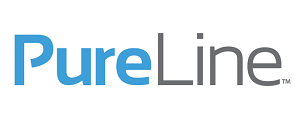In the realm of food and beverage manufacturing, achieving optimal hygiene is not just a goal, it is a necessity. The stakes are high: U.S. Department of Agriculture (USDA) research suggests foodborne pathogens cost the U.S. economy a staggering $17.6 billion annually1. The impact on restaurants is equally profound, with a single outbreak potentially incurring costs into the millions, depending on the establishment type. In a Harris Interactive poll, consumers indicated that 55 percent would switch brands temporarily following a recall, 15 percent of respondents denoted they would never purchase the recalled product, and 21 percent would avoid purchasing any brand made by the manufacturers.
This landscape underscores the critical role of effective surface sanitation, not just for maintaining a visually clean environment, but for safeguarding against invisible threats like Salmonella and Escherichia coli, which are notorious for their resistance to conventional cleaning methods. NSF International cautions against the assumption that a visibly clean surface is a safe one, advocating for more robust sanitation solutions2.
Enter Chlorine Dioxide (ClO2), a potent agent emerging for food and beverage safety. As the intricacies of this powerful sanitizer are better understood, it is redefining cleanliness standards, offering a safer, more effective alternative to traditional methods.
Understanding Chlorine Dioxide
Chlorine dioxide, a yellow-green gas (absorbed in liquid, or a true-gas), stands apart in the world of sanitizers. It is a formidable oxidizing agent, adept at eradicating a spectrum of microorganisms, including bacteria, viruses, and fungi. What sets ClO2 apart from traditional chlorine is its efficacy across a broad pH range and its lack of harmful chlorinated byproducts. Initially popular for water disinfection and as a bleaching agent, its role has expanded significantly. Registered by the U.S. Environmental Protection Agency (EPA) as a sterilant in 1988, in the present day, ClO2 is recognized for its exceptional capability in ensuring surface hygiene in food and beverage manufacturing, showcasing a remarkable balance of potency and safety.
The Science Behind Chlorine Dioxide
The efficacy of chlorine dioxide lies in its ability to penetrate and disrupt the cell walls of pathogens, effectively halting their metabolic processes and leading to cell death.
This capability extends to the breakdown of biofilms, which are often resistant to standard sanitizers. In comparison to commonly used agents like quaternary ammonium compounds and bleach, ClO2 excels in lower concentrations, making it less corrosive and free from toxic residues. As the industry evolves, ClO2 is increasingly favored for its comprehensive and safe approach to combating a variety of pathogens, including those resistant to traditional methods.
Scholarly Insights: Chlorine Dioxide's Proven Efficacy
In the realm of scientific inquiry, Chlorine Dioxide (ClO2) emerges as a standout sanitizer, as illustrated in a meticulous 2022 review analyzing 33 studies, which highlights ClO2's efficacy against a wide range of pathogens, including resistant strains of mycobacterium and various influenza viruses. Remarkably effective at low concentrations (20 to 30 milligrams per liter [mg/L]), ClO2 demonstrates its prowess in both safety and efficiency, independent of pH variations, which is critical in the fluctuating environments of food and beverage production3.
Complementing this review, a 2021 study also shed light on ClO2's high antimicrobial activity in dental settings, a parallel indicative of its potential in food and beverage manufacturing. Notably, ClO2 was found to be gentle on surfaces and equipment, ensuring no damage or degradation, a key consideration for maintaining the integrity of manufacturing infrastructure4. Its superiority over other disinfectants in various comparative scenarios underscores its status as a premier choice for effective, safe sanitation in the food industry.
Implications for Food and Beverage Manufacturers
The insights from these studies reveal the transformative ability of ClO2 for the food and beverage industry. ClO2's effectiveness at minimal concentrations marks it as a versatile, efficient choice for diverse manufacturing settings. Moreover, its proven efficacy against resistant pathogens enhances its allure in an era where traditional sanitizing methods often fall short. For food and beverage manufacturers, this translates to an opportunity to elevate sanitation standards, safeguard product quality, and protect consumer health, all while adhering to environmental and safety protocols.
Elevating Sanitation with PureLine's Pure 100
In the quest for impeccable food and beverage safety, PureLine leads the charge with Pure 100, a cutting-edge chlorine dioxide-based sanitizer. Engineered for use in diverse settings, from homes to hospitals, Pure 100 stands out as a one-step germicidal disinfectant cleaner. Its effectiveness is evident in its EPA registration and OMRI Listing for Organic Use5, assuring its suitability for food-contact surfaces without the need for rinsing or wiping.
Pure 100's unique, two-ingredient formula categorizes the spray as a hospital-strength disinfectant, powerful against a wide array of bacteria and viruses, yet gentle enough for daily use on food contact surfaces. Its ease of use is unparalleled—imply spray the solution and leave it to air dry, with no residue left behind. This user-friendly approach, combined with its neutral pH, absence of VOCs, harsh chemicals, and nauseous fumes6, makes Pure 100 an exemplary choice for maintaining the highest standards of cleanliness and safety in the food and beverage industry.
Explore PureLine's innovative approach to sanitation and discover how Pure 100 can revolutionize hygiene practices in your operation.
References:
- USDA Economic Research Service, Cost Estimates of Foodborne Illnesses
- NSF International, Clean Food Processing Facilities
- Jefri et al. (2022), Journal of Medicine and Life, 2022
- Kalay et al. (2021), Eureka Select, 2021
- OMRI Certification: Pure 100, OMRI Listed Products
- Pure 100 Registration, US EPA


